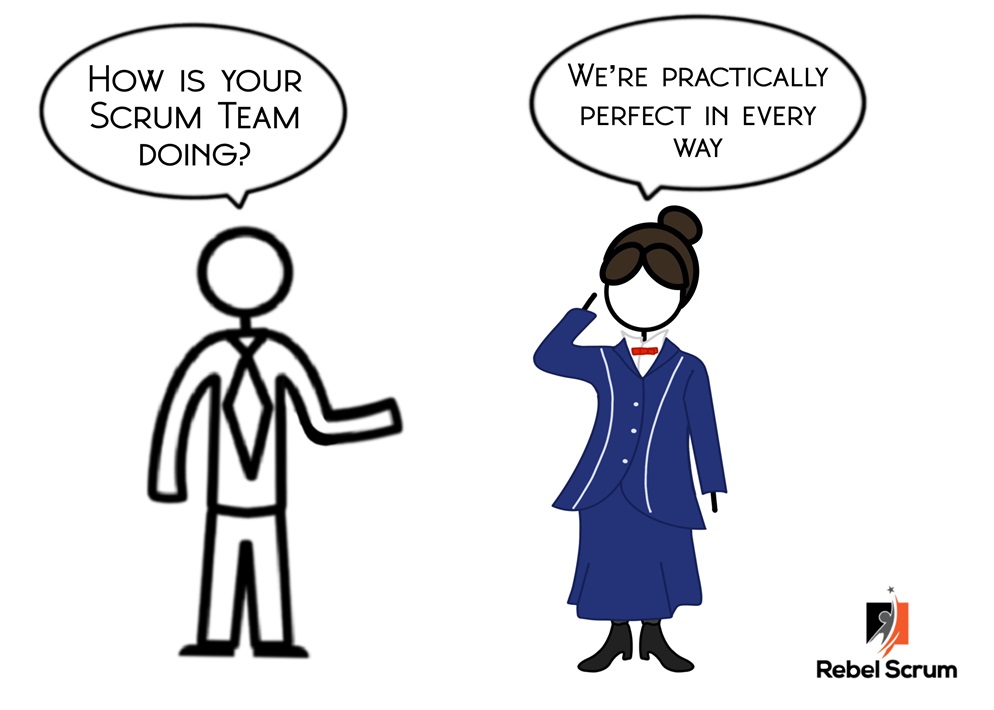Agile Methodology News
Alvinashcraft
0

Image Credit: Alvinashcraft
Dew Drop – February 26, 2025 (#4370)
- TechBash 2025 has released a sponsor prospectus for interested parties.
- .NET 10 Preview 1 and .NET 10 Release Index have been announced.
- Updates in .NET MAUI and ASP.NET Core are highlighted in the articles.
- Articles discuss topics like building cross-platform applications and integrating APIs with front ends.
- Best practices for fonts in Blazor charts and building bootable containers are covered.
- AI-related articles focus on tools like Copilot Voice and GenAI patterns.
- Design and testing articles delve into topics like security in Terraform deployments and app growth strategies.
- Podcasts feature discussions on AI, Scrum Masters, and innovations with generative AI.
- Events like Microsoft Build 2025 and TechBash 2025 are highlighted.
- Database and SharePoint/M365 topics cover SQL Server, data migration, and new features in Excel.
Read Full Article
Like
Scrum-Master-Toolbox
200

Season Hughes: Understanding the “Why” Behind Agile Transformation
- Season Hughes emphasizes the importance of understanding organizational motivations in Agile transformations.
- She suggests asking crucial questions like 'Why do you want this change?' and 'What does success look like?'
- The approach includes Scrum Guide training, Liftoff workshops, and regular check-ins for continuous improvement.
- Season Hughes is a strategist and creator focused on delivering value and driving growth.
Read Full Article
12 Likes
Kanbanzone
59

Image Credit: Kanbanzone
10 Strategies to Enhance Field Service Operations
- Enhancing field service operations involves various strategies, such as implementing mobile tools for real-time team communication and utilizing field service software solutions for seamless operations.
- Prioritizing customer feedback and utilizing digital checklists for accuracy on-site are crucial in improving overall satisfaction and reducing errors.
- Route optimization using GPS tracking, implementing Kanban boards for task management, and reducing paperwork with cloud-based documentation tools are essential for efficient operations.
- Empowering field technicians through training programs, managing inventory smarter, and using data analytics to predict and solve common issues are key strategies to enhance field service operations.
- These strategies ensure better communication, streamlined workflows, improved customer satisfaction, and proactive improvements in field service operations.
Read Full Article
3 Likes
Medium
100

Image Credit: Medium
Scrum Masters Are Useless — Product Managers Should Run Their Own Standups
- In many organizations, Scrum Masters have become an extra layer of process.
- Product Managers should run their own standups to improve collaboration.
- Scrum Masters were meant to reduce bureaucracy and improve communication.
- Scrum Masters often just nod and move on without adding much value to the standup.
Read Full Article
6 Likes
Discover more
- Programming News
- Software News
- Web Design
- Devops News
- Open Source News
- Databases
- Cloud News
- Product Management News
- Operating Systems News
- Computer Engineering
- Startup News
- Cryptocurrency News
- Technology News
- Blockchain News
- Data Science News
- AR News
- Apple News
- Cyber Security News
- Leadership News
- Gaming News
- Automobiles News
Alvinashcraft
205

Image Credit: Alvinashcraft
Dew Drop – February 25, 2024 (#4369)
- Claude 3.7 is now available in GitHub Copilot for Visual Studio, while Windows Dev Chat on March 12th introduces the AI Dev Gallery with Nikola Metulev, Greg Woo, and Gleb Khmyznikov.
- Updates in Web & Cloud Development include CSS Snapshot 2024, AI-powered Text-to-Flowchart using OpenAI and Blazor, and Terraform Good Practices by Chris Woodruff.
- In WinUI, .NET MAUI & XAML news, the League of Legends Client (OpenSilver) by Jaewung Lee is highlighted.
- Articles related to Visual Studio & .NET cover topics like creating C# .NET Dashboard Reports in ActiveReports and handling complex query scenarios with Entity Framework Core by Ali Hamza Ansari.
- The AI section discusses the compatibility of PostgreSQL Connector with AWS and GCP, as well as insights on Claude 3.7 Sonnet hybrid reasoning model by Anthropic.
- Design, Methodology & Testing articles cover topics like Redgate Flyway and Azure DevOps integration, and tests being saviors of lost knowledge.
- In Mobile, IoT & Game Development, Vonage introduces a new Client Library for Android and iOS, while Xcode Tip shares spell-checking insights.
- Several podcasts are highlighted, including discussions on AI thinking models, Azure Reservations, and the shift in tech interviews due to AI.
- Community & Events include insights on Amazon's Alexa event, the importance of Women's History Month, and the impact of Meta getting rid of fact-checkers.
- Miscellaneous articles cover topics like working with JSON in Python, insights into global political figures, and updates on technology-related issues.
Read Full Article
12 Likes
Scrum-Master-Toolbox
173

Season Hughes: Transforming Workgroups into High-Performing Teams
- Season Hughes discusses the difference between workgroups and real teams, emphasizing the importance of shared goals and collaborative success metrics.
- She highlights the significance of regularly revisiting The Scrum Guide for Scrum Masters to stay up to date with updates and ensure effective coaching.
- The article mentions the book recommendation 'Shift: From Product to People' and its focus on coaching in the fintech world.
- Season Hughes is a passionate strategist and creator focused on delivering value and driving growth in the ecommerce industry.
Read Full Article
10 Likes
Scrum
168

Image Credit: Scrum
Leading vs. Managing: The Scrum Master Dilemma
- The difference between leading and managing can often be blurred and debated, especially in the context of a Scrum Master role.
- Managers focus on tasks, scope, time, cost, and processes, whereas leaders inspire and create a sense of belonging, value, reward, and excitement.
- Leadership is about human connection and giving people something to believe in.
- A Scrum Master can choose to either manage tasks or lead people, creating an empowered and motivated team.
Read Full Article
10 Likes
Scrum
223

Image Credit: Scrum
A Little Too Supportive
- Scrum Masters who become too emotionally attached to their teams can lose the ability to assess improvement opportunities objectively.
- Continuous improvement requires the vision to see that something could be better and a willingness to challenge the status quo.
- Signs of overlooking improvement opportunities include stagnant customer outcomes, repetitive Sprint Retrospectives, and avoiding hard conversations about performance.
- To identify improvement areas, consider factors such as the team's ability to deliver a Done increment, delivery predictability, product quality, and effective inspection and adaptation.
Read Full Article
13 Likes
Testim.io
237

Image Credit: Testim.io
A Helpful Guide to Testing Promises Using Mocha
- Handling async code in JavaScript while unit testing in Mocha can be challenging, but there are effective techniques to overcome this.
- To test promise-based code in Mocha, you can return the promise in the it block and assert on the result in the .then method.
- Alternatively, you can use the newer async/await syntax by adding the async keyword to the it method and using await before the async function.
- Explicitly telling Mocha to wait for async tasks is crucial to ensure proper error handling in tests.
- There are three main ways to handle async code in Mocha: using the done callback, returning the promise, or using async/await.
- The done callback waits for its invocation before marking the test suite as complete, ensuring proper handling of async tasks.
- Returning the promise to Mocha allows for proper assertion handling, but missing a return value can lead to false positives in tests.
- Converting code to async/await format provides readability benefits and easier error handling, especially if async/await is supported.
- By choosing the right method for handling async code in Mocha, developers can ensure effectiveness and peace of mind in testing.
- Lou Bichard, a JavaScript full stack engineer, emphasizes the importance of high-performing teams and practices in product development.
- Overall, understanding and implementing async error handling in Mocha can lead to more resilient tests and efficient testing processes.
Read Full Article
14 Likes
Silicon
329
Image Credit: Silicon
The Agile Advantage: Doubling Down on the Biggest Business Challenges
- Businesses are facing challenges in fostering collaboration and communication in hybrid work environments, leading many to turn to Agile frameworks for solutions.
- Agile practices enhance efficiency, communication, and collaboration by breaking work into manageable increments and fostering feedback cycles.
- Despite the benefits of Agile, only 49% of UK businesses have adopted Agile frameworks, with internal resistance to change being a major challenge.
- To overcome resistance, middle managers need to undergo vertical development to expand their mindset and leadership capacity in complex environments.
- Teams should implement stronger change management practices to ensure successful Agile implementation across the organization.
- Visual collaboration solutions and task management software play a crucial role in enhancing decision-making and alignment outside of traditional meetings.
- Agile teams leverage visual tools for better collaboration and alignment, creating a more inclusive and fluid workspace.
- Leaders should bring forward Agile principles to address modern work challenges, improve communication, and foster greater alignment across teams.
- Proactively addressing alignment and adaptability issues can help organizations navigate the modern workplace complexities and achieve long-term success.
- Prioritizing consistent tools, training, and communication can build a more resilient and cohesive organization.
Read Full Article
19 Likes
Alvinashcraft
424

Image Credit: Alvinashcraft
Dew Drop – February 24, 2025 (#4368)
- Heroku now officially supports .NET, expanding its capabilities for developers.
- Azure File Sync receives updates for faster performance, increased security, and Windows Server 2025 support.
- ESLint version 9.21.0 has been released, offering improvements for JavaScript linting.
- Ember 6.2 is launched, bringing new features and enhancements to the web development framework.
- An article discusses alternatives to CAPTCHA and reCAPTCHA for authentication and security.
- WinUI3Localizer is introduced as a NuGet package to assist in localizing WinUI 3 applications.
- A guide on retrieving images from the clipboard reliably in WPF is revisited for efficient implementation.
- BlazorWebView.WinUI enables building WinUI applications using Blazor and WebView2 technologies.
- Methods for optimizing PDF files using a C# PDF API are detailed for improved file management.
- A discussion on C# 14's null-conditional assignment feature and its benefits for developers.
Read Full Article
25 Likes
Scrum-Master-Toolbox
196

Season Hughes: How A Product Cancellation Tested a New Scrum Master’s Growth
- As a new Scrum Master, Season faced a challenging situation when her team learned their product would be canceled.
- Initially, she made the mistake of telling team members they could skip daily standups if they had higher priorities, leading to unexpected low attendance.
- During the retrospective, she transformed this challenge into a learning opportunity by helping team members reflect on their personal growth and lessons learned.
- This experience taught her the importance of maintaining team ceremonies while providing individual support during difficult transitions.
Read Full Article
11 Likes
Testim.io
438

Image Credit: Testim.io
What Is End to End Testing? A Helpful Introductory Guide
- End-to-end testing is a crucial process where software is tested as it will be used by actual users, including all dependencies and environments.
- It involves testing the software from start to finish to ensure it functions correctly and meets user needs.
- End-to-end tests are essential for ensuring all components of the software work together correctly, especially in modern software with many moving parts.
- Automating end-to-end tests can save time and resources, providing valuable feedback to developers and ensuring software quality.
- Various layers of an application are involved in end-to-end testing, including the presentation layer, domain logic layer, and persistence layer.
- Automated testing is crucial for delivering high-quality software quickly and preventing regressions, which are unintended consequences of code changes.
- End-to-end testing is necessary to cover aspects like UI structure, pleasant user experience, and correct application behavior.
- An end-to-end testing example involves actions like verifying product information, cart functionality, and UI interactions on an e-commerce site.
- Identifying test scenarios, mapping steps, automation, and CI integration are key steps to implement end-to-end testing effectively.
- Using tools like Selenium and Testim can simplify the automation of end-to-end tests, ensuring more robust testing processes.
Read Full Article
26 Likes
Medium
333
Image Credit: Medium
Planning a Successful First-Time Launch
- Launching a product for the first time can be both exciting and daunting.
- Essential strategies to ensure a smooth first release include soft launches, performance testing, rollback plans, and user communication.
- Soft launches involve releasing to a limited user base or smaller geographic area, monitoring performance indicators, and making adjustments based on feedback.
- Hard launches involve releasing to the entire audience at once and require thorough load testing, rollback plans, and prepared customer service.
Read Full Article
20 Likes
Medium
429

Image Credit: Medium
T-Shirt Sizing in Estimation (Part 2): Practical Application, Case Studies & Implementation Guide
- T-Shirt Sizing is commonly used in Agile teams for ticket estimation, helping teams categorize tasks based on complexity and effort.
- Implementing T-Shirt Sizing in workflow requires customizing sizes and utilizing real-world scenarios for efficient project delivery.
- T-Shirt Sizing works best in certain scenarios, such as prioritizing features, scaling product features, and AI projects in high uncertainty.
- Teams should be cautious of common challenges like team disagreements, stakeholder preference for time estimates, and oversized tasks.
Read Full Article
25 Likes
For uninterrupted reading, download the app